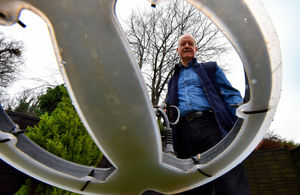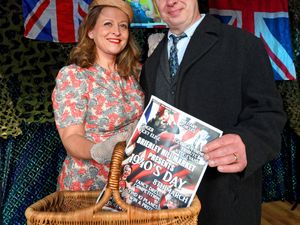Finders keepers - Wolverhampton metal detecting enthusiast tells us about the treasures hidden beneath our feet
Metal detecting has long been associated with the discovery of lost treasures.

But for Colin Pearson the hobby is all about unearthing and preserving pieces of our past.
“You can’t believe what’s lying a foot below the surface of the ground, just waiting to be discovered.
“You could find something someone lost 2,000 years ago and it hasn’t been touched by anyone since. You could be the first person to find it and that’s a fantastic feeling.
“This is our history and it needs to be preserved and recorded,” says the member of Bloxwich Research and Metal Detector Club.
The 71-year-old first picked up a metal detector, belonging to his uncle, in 1976, sparking his interest in the pastime.
“My Uncle George lived in Hinckley and was self-employed. He used to clean the drains along the A5 and would find Roman artefacts.
“During a visit I had a go with his metal detector and got hooked. I decided to buy myself a metal detector and I’ve never looked back,” he explains.
Since then the retired engineer has made thousands of discoveries with many taking pride of place in his Wolverhampton home where he meticulously researches and records every item.
They’ve included artefacts such as coins and jewellery dating back to the times of the Romans, Anglo-Saxons and Vikings.
All finds of interest are also recorded on the Portable Antiquities Scheme national database, making them available for worldwide research by anybody.
Among some of Colin’s prized discoveries are 15 Roman silver coins dating back as far as 77AD, during the reign of Vespasian, up until the reign of Marcus Aurelius in 161AD.
He also discovered a 15th century gold reliquary in a farmer’s field in Middleton on the Staffordshire/Warwickshire border, which at the time was valued at £7,000 and was acquired by Warwickshire Museum.
It’s engraved with the figure of St George who’s in the act of killing a dragon. The item is thought to be the lid to a small diamond-shaped box, which probably would’ve been worn on a chain around the neck. “This was a once-in-a-lifetime find because it’s so rare. It’s fantastic that’s it been saved from just being buried for eternity. Now people will be able to see it,” says Colin.
The oldest item in his collection is a 5,000-year-old axe blade, while one of the most curious is a ring which he believes features an engraving of William Shakespeare’s head.
“It really does look like him but I haven’t been able to get it confirmed. I don’t know if it’s of the period or from the 18th century,” explains Colin.
He’s also travelled further afield and discovered a medal from the Flint Eisteddfod festival in Wales, which dates back to 1865, beneath Bournemouth Pier. Made from 90 per cent tin, Colin says it’s in a good condition for its age and considering where it was found.
“It’s unbelievable. How it survived all the salt water, I don’t know,” says Colin, who’s been a club member since 1990.
Founded in 1978, the club has around 60 members who spend every Sunday searching sites, between Wheaton Aston and Tamworth. They research an area first before applying for permission from the landowner to carry out a search – they can’t take place without prior permission.
A quality metal detector can cost upwards of £150 and many will have distinctive beep tones based on the type of metal.
Colin says he doesn’t have a set method for searching with his detector and tends to wander around randomly, not going in any specific direction. Every time he hears the beep of his metal detector he gets excited. “It’s a fabulous feeling,” he adds.
“There’s a moment when you don’t know what you’ree going to find. You can end up with a lump of earth and a piece of history inside it,” he says.
After hearing the beep, he then digs a hole before using a pinpoint probe to narrow the search area.
A pouch is carried for all of the finds, whether they are interesting or just junk, and they’re all removed from the field so that they don’t unwittingly get dug up again in the future.
Treasure
As well as finds of interest being recorded by the national database, anything believed to be treasure must be reported to a coroner.
Objects that don’t qualify as ‘treasure’ are items whose owners can be traced, unworked natural items such as animal bones, objects from the foreshore which are wreak, single coins found on their own, or groups of coins lost one by one over a period of time.
Once an item is ruled to be treasure the coroner will inform the British Museum or the National Museum Wales and they will ascertain whether they or any other museum wishes to buy it. If it’s purchased, the money is shared between landowner and the finder. If no museum wishes to purchase the piece, it will be returned to the finder after 28 days unless the landowner objects.
Club members keep in touch with the Finds Liaison Officer for Staffordshire & West Midlands who is based at Birmingham Museum and Art Gallery and helps with the recording of discoveries.
Researching finds is what makes the hobby so fascinating for Colin. “Research is the best part because you start no knowing anything about an item but you can find out its history and who might have owned it or made it. Every item is interesting - it’s all interesting.
“If we didn’t dig them up, all this stuff would be lying in the ground, corroding away and would be lost forever. It’s a fantastic hobby,” he adds.
Heather Large




